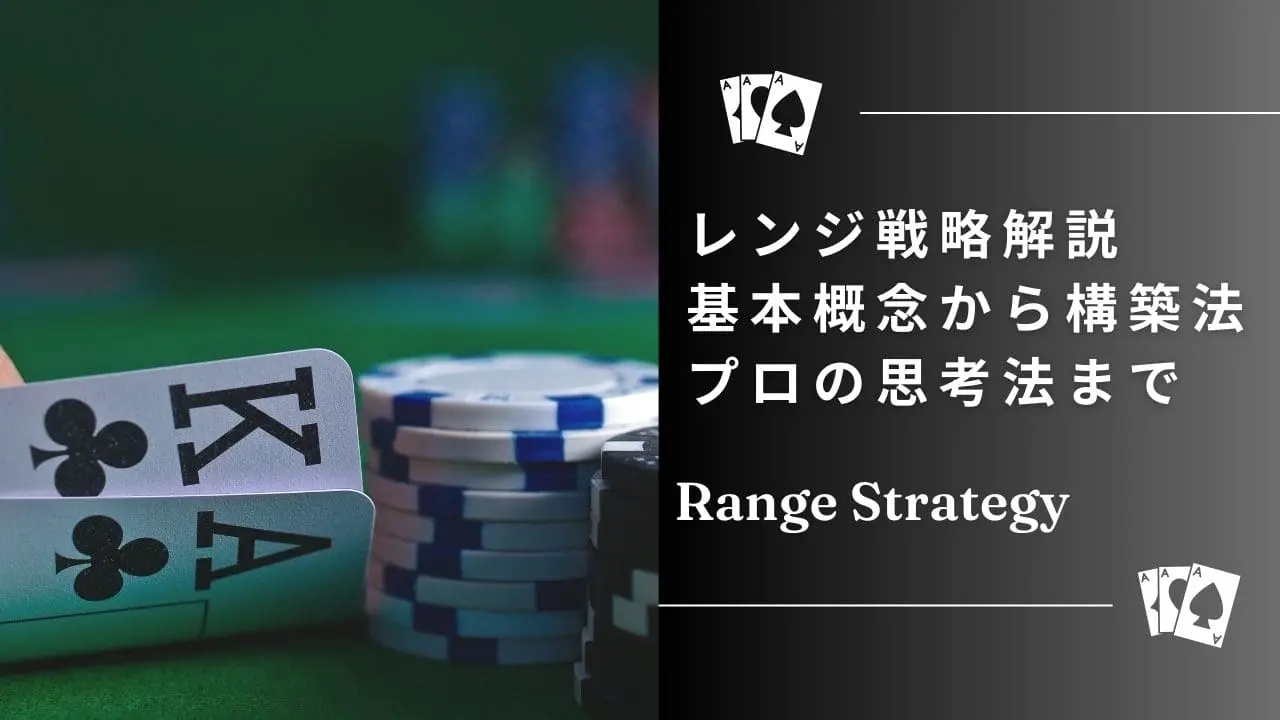If you’re serious about improving your poker game, understanding hand ranges is essential. Rather than thinking in terms of specific hands, advanced players make decisions based on the range of hands their opponents could have. This shift in thinking—from absolute hand strength to relative range strength—is what separates beginners from advanced players.
In this guide, you’ll learn:
- What poker ranges are
- Why they’re important
- How to create your own ranges
- Range strategies by player level and position
- Tools to improve your range analysis
Whether you’re new to the game or looking to refine your skills, this guide will help you master the use of ranges in poker.
What Is a Poker Range?
A poker range refers to the collection of hands a player might hold in a given situation. For example, if someone raises from early position, their range is likely to include strong hands like AA–TT, AK, and AQ. In contrast, a late-position raise might include a wider range such as suited connectors or weaker aces.
Why Ranges Matter
- More Accurate Reads: You can’t know your opponent’s exact hand—but you can estimate their range.
- Better Decision-Making: Comparing your hand to your opponent’s range leads to more profitable calls, folds, and bets.
- Strategic Planning: Build your own balanced range to make yourself tougher to read.
Building a Basic Preflop Range
When constructing your own preflop range, consider:
- Position: The earlier your position, the tighter your range should be.
- Stack Size: Short stacks require tighter, more aggressive play.
- Game Type: Ranges differ in cash games vs tournaments.
Example Open-Raise Ranges by Position
- Early Position (EP): AA–99, AK, AQ
- Middle Position (MP): Add AJ, KQ, 88–77
- Cutoff (CO): Add ATo, KJ, 66–55, suited connectors
- Button (BTN): Very wide, including suited gappers, small pairs, and weak aces
From Hands to Ranges: Thinking Like a Pro
Beginner Level
- Focus on playing strong, premium hands.
- Use static charts as a guideline for preflop ranges.
- Avoid speculative hands unless in late position.
Intermediate Level
- Start incorporating suited connectors, small pairs, and broadway hands in position.
- Understand the concept of range advantage and nut advantage.
- Use software like Equilab to study ranges.
Advanced Level
- Balance your 3-bet, call, and fold ranges preflop.
- Use mixed strategies (e.g., raise X% of time, call Y%).
- Apply GTO (Game Theory Optimal) principles to remain unexploitable.
- Analyze opponent tendencies to exploit range weaknesses.
Postflop Range Application
Understanding your opponent’s range is even more critical postflop.
Flop Texture and Range Advantage
- On a dry board (e.g., K-7-2 rainbow), the preflop raiser often has the range advantage.
- On a wet board (e.g., 9♠-8♠-7♥), the caller might have more sets and draws in their range.
Use your perceived range to represent strong hands even when you miss the flop.
Useful Tools for Range Study
| Tool | Description |
| Equilab | Free equity calculator to build and analyze ranges |
| Flopzilla | Range visualization and EV calculations |
| GTO+ | Advanced solver for building GTO strategies |
| RangeConverter | Preflop charts and push/fold ranges |
Common Mistakes with Ranges
- Overvaluing suited cards: Not all suited hands are worth playing.
- Ignoring position: Playing too loose from early positions leads to trouble.
- Failing to adjust: Sticking to static ranges without adapting to opponents or table dynamics.
Conclusion
Mastering poker range strategy takes time, but it’s one of the most powerful ways to elevate your game. Start with solid preflop fundamentals, learn to evaluate ranges postflop, and constantly refine your approach with tools and analysis.
Whether you’re at the micro-stakes or final tables, thinking in terms of ranges rather than hands will help you make more informed decisions—and ultimately win more chips.


